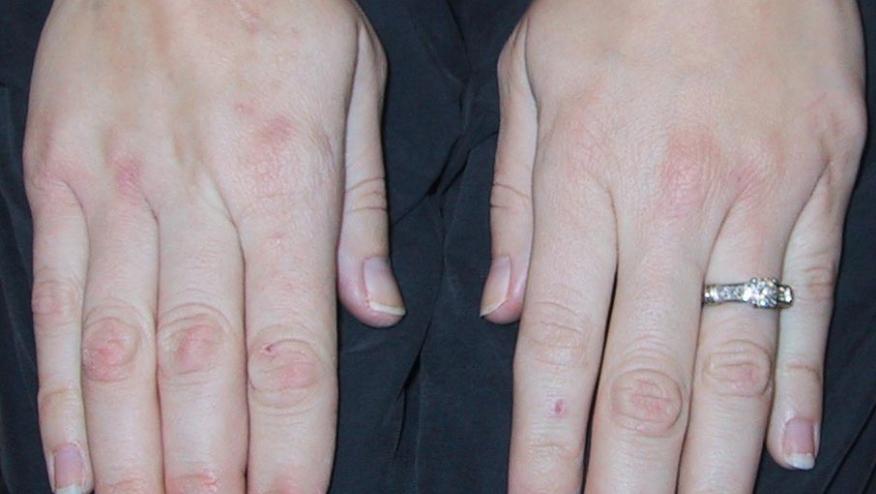New ACR/AF Guidelines on JIA Polyarthritis and Uveitis Save

The American College of Rheumatology (ACR) and the Arthritis Foundation (AF) have released two guidelines on management of juvenile idiopathic arthritis (JIA). The first addresses the treatement of non-systemic polyarthritis, sacroilitis and enthesitis; and the second focuses on JIA associated uveitis - screening, monitoring and treatment.
After a systematic literature review, a panel of 5 teams (Leadership Team of 4 pediatric rheumatologists; a Literature Review Team, an Expert Panel of 9 pediatric rheumatologists, a Voting Panel, of 15 pediatric rheumatologists and 2 adult JIA patients and a Parent and Patient Panel 9 adult JIA patients and 2 JIA parents) used GRADE (Grading of Recommendations Assessment, Development and Evaluation) methodology to rate the strength of evidence and provide a final recommendation.
In the first publication on treatment there were 39 recommendations (8 strong and 31 conditional), with very low or low evidence for 90% of the recommendations. Below are exerpts from this research.
General recommendations (generally with low or very low evidence) included:
- A strong recommendation against adding chronic low-dose glucocorticoid, regardless of risk factors or disease activity
- NSAIDs and intraarticular glucocorticoids should each be used as adjunct therapy
- Using methotrexate is conditionally recommended over leflunomide or sulfasalazine
- Using subcutaneous methotrexate is conditionally recommended over oral methotrexate
- Bridging therapy with a limited course of oral glucocorticoids (3 months) during initiation or escalation of therapy in patients with high or moderate disease activity is conditionally recommended
- Biologic (etanercept, adalimumab, golimumab, abatacept, or tocilizumab) combination therapy with a DMARD is conditionally recommended over biologic monotherapy
- Combination therapy with a DMARD is strongly recommended for infliximab
- A conditional recommendation to get physical therapy and/or occupational therapy for children and adolescents with JIA and polyarthritis who have, or are at risk for, functional limitations
The second ACR/AF guideline article addresses the "..Screening, Monitoring, and Treatment of Juvenile Idiopathic Arthritis–Associated Uveitis".
Recommendations for ophthalmic screening, monitoring, and treatment of JIA‐associated uveitis
Recommendations for ophthalmic screening
- JIA at high risk of developing uveitis: Ophthalmic screening every 3 months is conditionally recommended
Recommendations for glucocorticoid use
- JIA with chronic active uveitis: use prednisolone acetate 1% topical drops is conditionally recommended over difluprednate topical drops
- Adding or increasing topical glucocorticoids for short‐term control is conditionally recommended over adding systemic glucocorticoids
- Consider adding systemic therapy in order to reduce dependence on chronic topical glucocorticoids is conditionally recommended over not adding systemic therapy and maintaining topical glucocorticoids only
Recommendations for DMARDs and biologics
- JIA with chronic active anterior uveitis, who need DMARDs or biologics: Starting systemic treatment for uveitis, using subcutaneous methotrexate is conditionally recommended over oral methotrexate
- Starting a TNFi, starting a monoclonal antibody TNFi is conditionally recommended over etanercept
- Severe activechronic active uveitis and sight‐threatening complications, starting methotrexate and a monoclonal antibody TNFi immediately is conditionally recommended over methotrexate as monotherapy
- Inadequate response to one monoclonal TNFi at standard JIA dose, escalating the dose and/or frequency of the monoclonal TNFi to above standard is conditionally recommended over switching to another monoclonal antibody TNFi
- If Failed methotrexate and 2 monoclonal antibody TNFi, abatacept or tocilizumab are conditionally recommended as biologic DMARD options, and mycophenolate, leflunomide, or cyclosporine as alternative nonbiologic options
These guidelines are intended to assists clinicians and caregivers who care for JIA patients with polyarthritis or chronic active uveitis.










If you are a health practitioner, you may Login/Register to comment.
Due to the nature of these comment forums, only health practitioners are allowed to comment at this time.